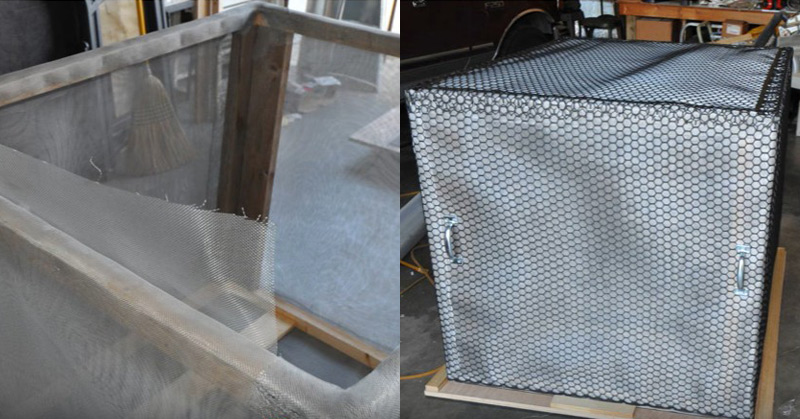In an ever more interconnected world, the capability to protect electronic devices from EM interference is becoming increasingly important than ever. Faraday cages, named after the renowned scientist Michael Faraday, offer a unique solution to this problem by forming a shield against EM fields. Regardless of whether for personal use, emergency preparedness, or data security, comprehending the environmental impact and sustainable practices surrounding Faraday cages is essential. With a variety of designs and materials available, the options for consumers can be confusing.
This article intends to demystify Faraday cages by exploring important features to consider before making a purchase, the importance of materials used in construction, and factors that affect size and portability. Additionally, we will delve into the effectiveness of different types of cages in blocking electromagnetic pulses and other signals, making sure your devices remain safe and secure. Join us as we uncover the best practices for selecting and upkeeping a Faraday cage customized to your needs while considering its environmental implications and innovations in technology.
Grasping Faraday Cage Mechanism
A Faraday enclosure operates on basic principles of electromagnetic theory, specifically designed to guard its items from ambient electrical influences. When a conducting material surrounds a space, it redistributes electrical charges, creating a neutral zone inside the cage. As pop over to these guys , any interference, such as radio frequencies or EM pulses, is successfully stopped from reaching the interior. This capability makes Faraday shields crucial for protecting vulnerable electronic devices from different influences.
The performance of a Faraday shield depends largely on the components used in its building. Materials like copper, aluminium, and alloys are popular materials due to their high conductivity. The thickness and form of the material also play crucial roles in determining the cage’s ability to block signals. A properly built cage can reflect and take in electric energy, preventing unnecessary interference from influencing the devices housed within.
Correct grounding is a key aspect of Faraday enclosure functionality, as it improves the performance of the cage. Grounding allows excess electrical charges to effectively disperse into the earth, further safeguarding the inside from ambient interferences. Comprehending these principles is essential for individuals looking to employ a Faraday cage, whether for home devices, disaster readiness, or targeted functions in information protection.
Materials and Dimensions for Effective Protection
The selection of components substantially affects the efficacy of a Faraday cage. Elements such as copper metal, aluminium, and stainless steel are frequently used due to their superior conductivity properties. web link is especially favored for its outstanding conductivity, making it incredibly efficient at blocking EM interference. Aluminum, while slightly not as efficient, is lightweight and resistant to corrosion, making it a popular choice for mobile applications. Stainless steel, on the other hand, provides strength and robustness, which can be essential for fixed installations. Understanding these material characteristics is crucial when selecting a cage customized to specific shielding requirements.
Dimension is another critical factor in ensuring effective shielding. A Faraday cage should be properly sized to fit the devices it is meant to protect. If the cage is too small, the devices may not fit well, resulting in compromised protection. On the other hand, an excessively big cage may not provide the required shielding effectiveness, especially in terms of signal attenuation. It's important to know the dimensions of the devices and allow for some extra space to make sure that they are not in direct contact with the cage walls, which can enhance shielding efficiency.
In addition, the design of the cage alone, comprising its shape and the distance of the conductive material, plays a vital role in its performance. A well-constructed Faraday cage with an suitable mix of components and size will successfully shield against a broad spectrum of frequencies, providing robust protection against electromagnetic pulses and other interferences. Whether for individual electronics or bigger systems, taking these factors into account will result in a more efficient and dependable shield.
Selecting the Best Faraday Cage for One's Requirements
As choosing a Faraday cage, it's important to consider the particular function it will serve. If you're looking to shield sensitive electronics from electromagnetic interference or an EMP, you will need a cage that meets certain protection effectiveness criteria. It's vital to know the wave ranges your devices operate within so that the cage you select can adequately block those signals. Investigating products that have been evaluated for their effectiveness will help guarantee your devices are shielded properly.
One more critical factor is the size of the Faraday cage. This will be determined by the quantity and dimensions of the devices you want to safeguard, as well as whether you plan to keep any additional items in the future. A suitably sized cage will not only accommodate your devices but will also enable for simple access and arrangement. Travel-friendly options may be ideal if you frequently travel with your electronics, while larger, fixed cages might be fitting for home use or emergency preparedness.
Finally, think about the materials used in the Faraday cage. The efficacy of the shielding will rely on the metals used, with copper alloy and aluminum being among the best options for their conductive properties. Additionally, consider whether you need added features like fireproofing or waterproofing, particularly if the cage will be kept in a place exposed to such conditions. Weighing these factors will help you make an informed decision tailored to one's requirements.

